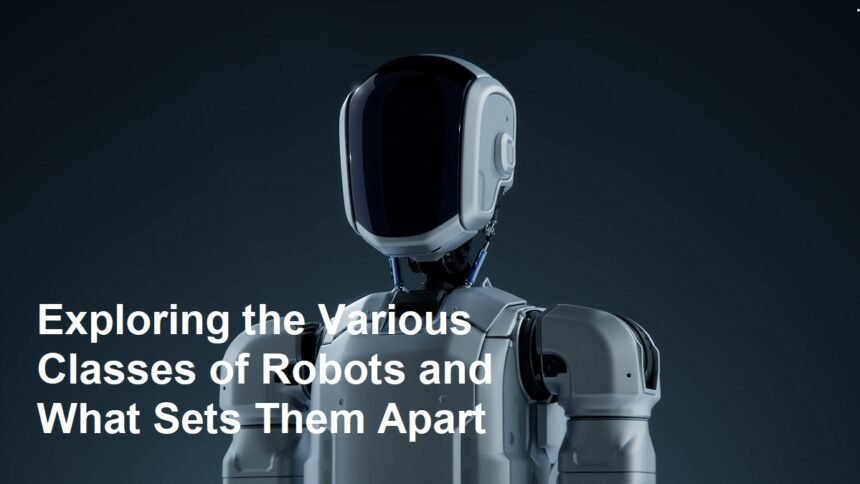Introduction
Robots have become integral to modern industry, technology, and daily life. From manufacturing plants to hospitals and homes, robots are transforming how tasks are performed, improving efficiency and safety. However, not all robots are the same; they come in various types, each designed for specific functions and possessing unique characteristics. Understanding these different types of robots and their differences is essential to appreciate their roles and potentials.
1. Industrial Robots
Industrial robots are among the most common and widely used types of robots today. These machines are primarily designed for manufacturing processes, such as welding, assembly, painting, and material handling. They are usually robotic arms with multiple joints, capable of precise and repetitive movements.
Key features:
- High speed and accuracy
- Operate in fixed locations
- Usually programmed for specific tasks
Differences: Unlike other robots, industrial robots are specialized for heavy-duty tasks in controlled environments. They typically don’t interact with humans directly due to safety concerns unless equipped with safety features.
2. Service Robots
Service robots are designed to assist humans by performing various tasks in different environments. They can be found in healthcare, hospitality, retail, and domestic settings. Examples include robotic vacuum cleaners, delivery robots, and assistive robots in hospitals.
Key features:
- Human-interactive or assistive
- Mobile and autonomous to some extent
- Capable of navigation and adaptation
Differences: Unlike industrial robots, service robots interact more with people and are often equipped with sensors and software for navigation and decision-making in dynamic environments.
3. Humanoid Robots
Humanoid robots are designed to resemble and mimic human behavior and appearance. They are equipped with sensors, cameras, and actuators that allow them to recognize faces, interpret speech, and perform movements similar to humans.
Key features:
- Human-like appearance and movement
- Capable of communication and interaction
- Often used in research, entertainment, or customer service
Differences: The focus on human-like features and social interaction distinguishes humanoid robots from other types that primarily perform specific tasks without resembling humans.
4. Autonomous Vehicles and Drones
Autonomous vehicles, including self-driving cars, and drones are mobile robots designed for transportation, surveillance, and reconnaissance. They operate independently using sensors, cameras, and AI to navigate and perform their functions.
Key features:
- Mobility over various terrains
- Equipped with AI for navigation
- Used for transportation, rescue, and surveillance
Differences: These robots are primarily characterized by their ability to operate in open, unstructured environments, often in outdoor settings, unlike most industrial or service robots.
5. Collaborative Robots (Cobots)
Cobots are a newer category of robots designed to work alongside humans safely. They are equipped with sensors and safety features that allow them to operate without the need for safety cages and to assist humans in tasks like assembly and packaging.
Key features:
- Safe to operate near humans
- Flexible and easy to program
- Enhance human productivity
Differences: Unlike traditional industrial robots, cobots are designed for direct human collaboration, emphasizing safety and adaptability.
6. Mobile Robots
Mobile robots are capable of autonomous movement within an environment. They include robots such as robotic vacuum cleaners, warehouse robots, and exploration robots used in space or underwater.
Key features:
- Mobility over various environments
- Use sensors and AI for navigation
- Often used for exploration, cleaning, or transport
Differences: Their primary feature is mobility, and they are often used in unstructured or changing environments, unlike fixed industrial robots.
Conclusion
Robots come in many different forms, each tailored to specific tasks and environments. Industrial robots excel in manufacturing, while service robots are designed for assistance and interaction with humans. Humanoid robots focus on social interaction, and autonomous vehicles and drones are built for movement and reconnaissance. Collaborative robots and mobile robots further expand the range of capabilities, emphasizing safety, flexibility, and mobility. Understanding these differences helps us appreciate how robots can be best utilized, and how they will continue to evolve to meet new challenges and opportunities in our world.












